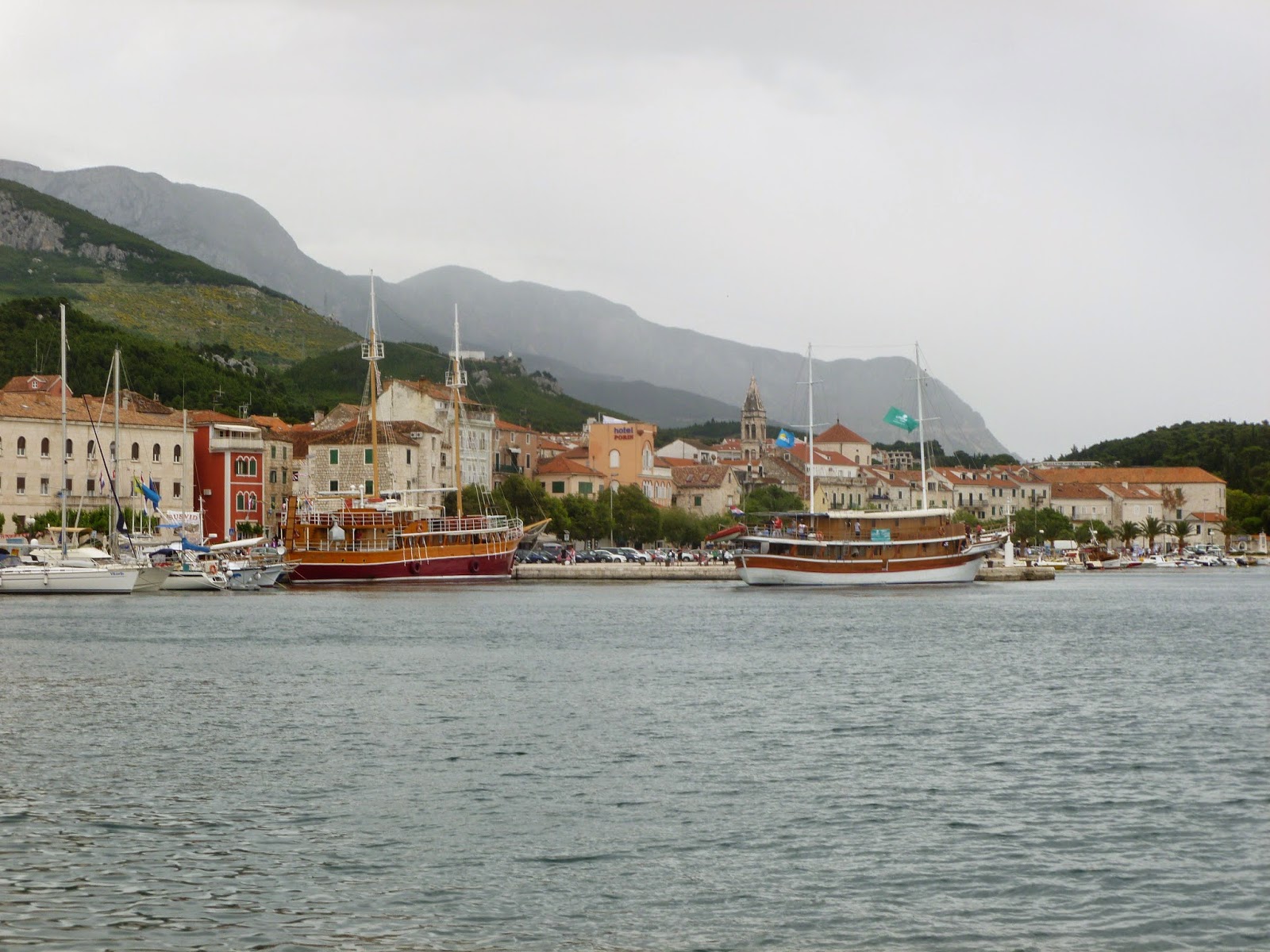 |
| Hotel Lone pools |
 |
| Hotel Lone's beach front |
We arrived in Croatia on May 25th and quickly fell in love with the country. It is absolutely beautiful! Though many of the buildings in the cities are from the post war era, modern resorts have been built along the water to accommodate the growing tourist trade.
 |
| The town of Rovinj |
 |
| Our balcony and adjacent whirlpool |
We stayed at four different locations on the Istrian peninsula, the largest peninsula in Croatia. Slightly south of Trieste, Italy, Istria juts out into the northern Adriatic Sea. The land was originally an island but the channel that separated it from the mainland was filled in during the 1700s.
Our first stop was in the small, picturesque town of Rovinj. We had four lovely days at Hotel Lone, our last Luxury Link special for a while. The hotel is ultra chic and the grounds are beautiful with several connected pools and a beach area situated on a cove. It is walking distance to town on one side and has a park on the other side with bike and walking trails. Our room opened onto a patio with a whirlpool that ran the length of the balcony and overlooked the pool and forest.
 |
| The pool at Histria Park Plaza Hotel in Pula |
TRAVEL TIP: Although many of the Luxury Link offers are expensive, there are good deals to be had -- especially if you travel in the off or shoulder season. The hotels we have stayed at have been reasonable and the package usually includes perks like breakfast, a massage, dinner, resort credit to spend. The auction price is better than the Buy Now price, so I always call the hotel ahead to make sure they have availability on our preferred dates.
 |
| View from our balcony across marina to Pula |
 |
| Typical Croatian beach |
We spent another four days at a hotel in Pula. Pula is an ancient city that reached its zenith under Roman
rule in 46 – 45 B.C. Emperors and nobility spent summers here. The 6th
Roman amphitheater was built in Pula; we saw the massive structure on our way
through town. There is evidence of humans in the area one million years ago.
At this hotel as well as the following two, we booked half board which means that breakfast and dinner were included, a nice convenience.
 |
| The village of Rabac |
 |
| Beach and walkway in front of our hotel in Rabac |
All the hotels had excellent
service and outstanding wellness areas with indoor pool, sauna, steam and whirlpools. We would happily return to any of them but first choice would probably be our third stop - the Valamar Sanfior in Rabac. There was a beautiful walkway along the water into a small, cute town and the food at the hotel was superb.
 |
| View from our hotel in Opatija |
Like so many resort towns along the water, Rabac was originally a small fishing village and the shore is dotted with stone covered beaches. People bring chairs or mats or just stretch out on the large rocks that dot the coast and surround the incredibly clear water.
 |
| Park in center of Opatija originally part of ... |
Our fourth and final stop was the small city of Opatija, the first seaside resort on the Istrian Peninsula. Winding along the water are a promenade, outdoor restaurants, a beautiful park, and hotels and villas that exude the beauty and luxury of when they were built in the late 19th and early 20th centuries to accommodate Austrian nobility. Villas also dot the hills surrounding the town. Most of the ones on the water have been converted to luxurious hotels.
 |
| this villa |
Croatia has changed hands many times over the years. In 1947, it was ceded to Yugoslavia but fought for and finally achieved its desire for independence in a war that lasted from 1991 – 95. The country became the 28th member of the European Union on July 1, 2013.
Croatia has a population of slightly less than 4 and 1/2 million and ranks as the 18th most popular tourist destination in the world. However, it is gaining recognition and I suspect it will soon climb higher.
 |
| Seaside villa converted to hotel |
 |
| Opatija's waterside promenade |


Villas from Opatija's Belle Epoque converted to colorful hotels
Now we begin our journey down the Croatian coast.



































